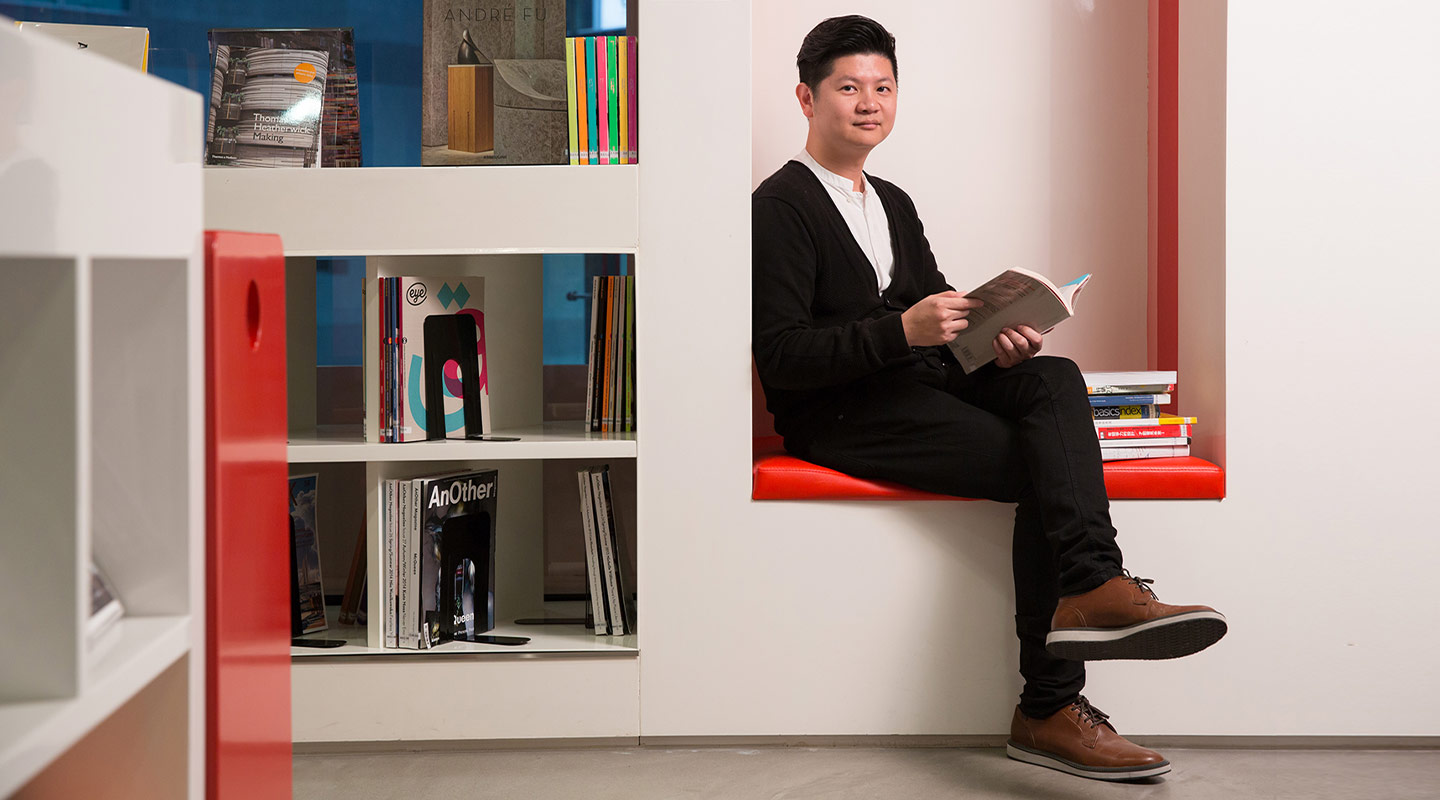Architecture Redefined
Alumnus and architect Karr Yip delves into three of his design projects and explains how he infuses spatial design with human values.

What is architecture? Frank Lloyd Wright famously summed it up as ‘the scientific art of making structure express ideas’. If architecture exceeds concrete and steel, being an architect is definitely more than a maker of buildings.
When Karr Yip talks about architecture, he correlates it with design, occasionally with art; most of the time he blurs the line between architecture and philosophy.
Form follows idea
Karr was a fine arts student at CUHK to begin with. At the end of his sophomore year, he decided, more or less on a whim, to sign up for the architecture programme to start all over again. Unorthodox as it might seem, Karr considered it a matter of course.
‘Moving over to architecture was simply choosing a different medium to express my ideas. At the Department of Fine Arts, I had been learning to work in various forms—Chinese painting, oil painting, photography…. It was just that among all the artistic forms, architecture suddenly piqued my interest.’
He explained that mind and spirit are the antecedents of artistic creation, that architecture is one of the ways to give form to thoughts. ‘An artist can see the unseen and discover the beauty that otherwise goes unnoticed. A designer or architect turns it into something useful.’
Form follows function
Before obtaining his master’s degree, Karr had founded his own design firm ADO. Among the hundreds of projects he brought to fruition in the past 13 years, the makeover of the Mong Kok Post Office is a stellar example.
Those who have ever set foot in the Mong Kok Post Office after 2012 should have been aware that the place was refreshingly transfigured with its apple green hue and undulating elements. The curvy writing tables, according to Karr, are utilitarian rather than fancy showpieces—the higher plane is fit for writing while standing up, and the lower is at a convenient position for access by people in wheelchairs.

The original signage board over each counter was superseded by electronic display. To improve visual communication, Karr used colours to distinguish service types. ‘The Post Office used to break down its service into as many as 40 categories that customers were likely to stand in the wrong line. Under the new signage system, the colours of blue, green, and light green represent three activities—to send, to pay, and to collect. As long as you know you are there to settle bills, you will unhesitatingly join the blue line.’
‘To a post office, function always comes first. Every design is supposed to serve a practical purpose. The primary goal of the refurbishment is to help improve public service and better manage queues, not just to give it a facelift based on some pretty pictures.’
Form follows emotion
Architecture is a story that is told through its hard materials. Karr said he regarded the art of spatial design as constructing a monument to externalize the value of a place and what it means to people living there.
In Plover Cove in the northeast of Tai Po, there was once a creek that burst its banks during the wet seasons. Wading was a fact of life for nearby residents. When he was commissioned to the improvement work, Karr suggested paving the way with rippling tiles to create the effect of waves.
‘Flooding did cause inconvenience, while at the same time, water-walking on the way home rests in the collective memory of the older generation. Encasing the river is not necessarily accompanied by the stifling of a recollection. The new pavement is designed to retain the positive aspects of a memory.’

Expanded definition of an architect
Karr makes a point of finding the unique identity of each building and space, but how does he define himself?
‘I define myself as a Space and Digital Architect.’
How does architecture have anything to do with information technology?
‘In The Matrix Revolutions, the white-haired man introduced himself to Neo: “I am the architect; I created the Matrix.” An architect is not just someone who designs buildings; the label also refers to the person who plans projects and makes things happen—of course, a project can be a skyscraper, a home interior, or a video game.’
No wonder Karr has been expanding his business to the realms of website, mobile apps, and social media. Genesis Spirits, a mobile game he claimed is 100% made in Hong Kong, captured the attention of a Japanese agency the next day after its launch.
‘It is my vision to combine creative design with digital technologies. There is no shortage of gifted artists or IT experts in Hong Kong, but they are in separated industries. IT projects are mostly led by people with programming backgrounds and creativity is not within their expertise, while artists focus on graphic design and put form over function. An integration of the two worlds is probably the change the city needs at this point.’

By Christine N., ISO
Photos by Keith Hiro

